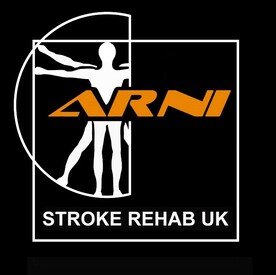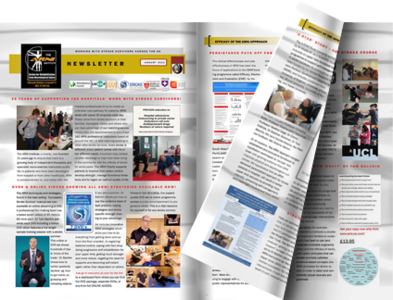Imagine a future where stroke survivors can relearn brand-new signals and regain function using advanced technology that talks directly to their brain. Scientists have just achieved an incredible breakthrough: they’ve created a revolutionary, soft, wireless implant that uses tiny, gentle flashes of light to send information straight into the brain!
This isn't science fiction anymore; it’s about leveraging neuroplasticity... This soft implant acts like an artificial pathway, potentially bypassing damaged areas to help the brain learn entirely new functional signals. For stroke survivors struggling with movement, sensation, or communication issues, this technology offers a tantalising possibility of retraining the brain in ways we previously could only dream of.
The fact that the implant is soft and wireless is also helpful; it reduces discomfort and makes it much more practical for long-term use. While this is still a cutting-edge research finding and not yet available for clinical use, ARNI Stroke Rehab UK thinks that it provides a bit of an indicator about the future of stroke recovery methods 🙏🌟
www.arni.uk.com
#ARNItrokecharity #StrokeSurvivor #Neuroscience #Neuroplasticity #BrainImplant #MedicalBreakthrough #HopeForFuture #ScienceNews #Innovation
... See MoreSee Less
NORTH LONDON SUCCESS STORY
I had a severe stroke in February 2012 caused by a bleed on the brain. I spent about 2 weeks in a coma and as a result I lost the use my left leg and arm. I was in Hospital for 5 months before discharge.
In many respects I have been very lucky in that having spent 37 years in a Cavalry Regiment of the British Army and also volunteered and spent 3 years serving as a paratrooper with the airborne forces. So I have been reasonably fit and active all my life. This has all helped to give me a fairly robust view to adversity and a stronger mental approach towards what life can throw one’s way. To this must be added the invaluable help and encouragement given to me by my wife Elizabeth and family who have thought laterally to get round problems where and when they have cropped up.
In July 2014 a friend who had also had a stroke introduced me to Gabriella Pásztor and ARNI, for which I shall be forever grateful!! On my first meeting Gabi instantly gave me encouragement that my progress had not plateaued and has astonished me by the simplest changes that have made such a difference. With her depth of knowledge and skill and encouragement, my confidence and abilities have grown. She has been able to push me further over the last year, and that, and the many progressive exercises she has shown me, are helping me enormously.
I am much stronger and more confident in my ability do things which others do as a matter of course. Such as going up and down awkward steps that have no handrails and going into strange environments, and even being able to get up from the floor! Most people also remark as to how well I look and seem.
In summary, my year spent with Gaby has left me far better prepared to face life’s challenges. The exercises I have been given have been progressively made more challenging so that I feel that I can continue to achieve more generally.
www.arni.uk.com
#ARNIstrokerehab #arnistrokecharity #strokesurvivors #neuroplasticity #neurorehab #strokeexercise #strokerecovery #strokerehabilitation #strokesurvivorscan #strokerehab #arnistrokerehab #neurorehabilitation
... See MoreSee Less
For many stroke survivors, the fear of falling and reliance on traditional walkers that cause hunching posture are major challenges. But a lot of survivors are discovering the LifeGlider mobility aid and absolutely loving the difference it makes - this innovative device is changing lives by helping users walk upright, often hands-free, and most importantly, with virtually no risk of falling.
Users often share to us at ARNI that while it takes practice to get used to, the LifeGlider is far superior to a conventional walker because it provides stability by supporting the centre of gravity and securing the pelvis with a belt and saddle system.
This unique design allows individuals to stand tall and engage their muscles differently than traditional aids. Many survivors report a huge boost in confidence, a reduction in the fear of falling, and even the ability to do everyday tasks like making breakfast or walking without a therapist constantly by their side. The aim is to help people reclaim their independence and dignity.
While scientific studies on the LifeGlider specifically are often experiential or focus on feasibility, a broader body of research into neurological rehabilitation consistently highlights the effectiveness of intensive, task-related mobility training and the use of assistive devices to improve gait and balance.
The core principle of the LifeGlider - enabling consistent, safe walking practice - aligns with evidence-based strategies for promoting neuroplasticity and recovery. So, if you struggle with balance and fear falls, it might be the tool you need to get moving more safely and independently!
Check out customer stories on their website or talk to your ARNI Stroke Rehab Instructor to see if it’s the right fit for your unique recovery journey.
www.arni.uk.com
#ARNIStrokeRehab #StrokeRecovery #LifeGlider #MobilityAid #FallPrevention #NeuroRehab #StrokeSurvivor #Independence #PhysicalTherapy #ConfidenceBoost
... See MoreSee Less
🧠ARNI Research colleagues who are running the TriCEPS Trial have hit a major Milestone! 🎉 The TriCEPS trial, a vital clinical study focused on improving upper limb function after a stroke, has just announced they have successfully recruited their 200th patient! This is a fantastic achievement that moves us closer to finding better ways to help survivors regain movement and independence.
If you'd like to take part, please click the link to the ARNI site below: Sheffield Teaching Hospitals and NHS Trusts nationally are looking for stroke survivors (aged 18+) with persistent arm weakness following an ischaemic stroke, which occurred between 6 months and 10 years ago -please do get involved!
The trial is investigating the effectiveness of an intervention that targets the triceps muscle to improve arm function, something that many stroke survivors struggle with daily. The impressive recruitment milestone highlights a strong nationwide commitment to advancing stroke care. The study is currently running across an expansive network of 19 NHS centres nationally, allowing researchers to gather a diverse and robust set of data.
Getting involved in clinical trials like TriCEPS is so important for the future of stroke treatment. Every participant brings us a step closer to evidence-based breakthroughs that can change lives for the better. Congratulations to all the research teams and the patients participating in this crucial effort!
If you'd like to take part
arni.uk.com/can-vagus-nerve-stim-help-arm-recovery-after-stroke/
We are moving science forward, to#triceps💙#strokerecoveryk#neuroscienceu#clinicaltrialn#nhsresearchH#strokesurvivork#NeurorehabN#scienceb#hopience #Hop
... See MoreSee Less
There are so many ways you can use a ball for stroke rehab. You can hold it, squeeze it, roll it, throw and catch it, guide it. Fantastic tool for improving dynamic balance and coordination.
www.arni.uk.com
#ARNIstrokerehab #arnistrokecharity #stroke #strokesurvivors #Neuroplasticity #Neurorehab
... See MoreSee Less
It is with a heavy heart that ARNI Stroke Rehab UK reports the deeply distressing story of Roger Bass, a 90-year-old grandfather who passed away in a crowded hospital corridor, a situation his family tragically described as 'degrading'.
At the end of November, Mr. Bass was taken by ambulance to Queen's Hospital in Romford after suffering a suspected stroke. What should have been a place of urgent care and dignity turned into a heartbreaking scene. Instead of a quiet ward, Roger spent his final hours on a temporary bed surrounded by the chaos of a busy corridor, with dozens of other patients also waiting for a bed to become available. His family witnessed a man who served in the Navy and the Fire Service, a man who deserved respect, die without privacy in a thoroughfare of the hospital.
This deeply upsetting event has brought the immense pressure facing our NHS hospitals into sharp focus. Hospital management expressed their sincere condolences, acknowledging that this standard of care is unacceptable, even in the face of immense demand and bed shortages. It raises critical questions about patient dignity, the strain on emergency services, and the need for immediate, systemic solutions to ensure no other family has to endure such a painful, public farewell.
www.youtube.com/watch?time_continue=1&v=3-iXsOZZyNg&embeds_referring_euri=https%3A%2F%2Fwww.itv.c...
Our thoughts are with Roger’s family during this incredibly difficult time, and we hope this story pushes for meaningful change in how we care for our most vulnerable. 🙏
www.arni.uk.com
#ARNIStrokerehab #NHS #HealthcareCrisis #QueensHospitalRomford #PatientDignity #StrokeAwareness #Austerity #heartbreaking
... See MoreSee Less
🚨 Important Update on Somerset NHS Stroke Services & What It Means for Our Community 🚨 The specialist hyper-acute stroke unit (HASU) at Yeovil District Hospital is set to begin removal this spring. This change means a major shift for stroke patients needing urgent, emergency care.
In simple terms: if you or a loved one shows F.A.S.T. signs of a stroke and calls 999, you will no longer be taken to Yeovil for initial emergency treatment. Instead, ambulances will transport patients requiring this urgent, time-critical care to the nearest specialised units in either Dorchester (Dorset County Hospital) or Taunton (Musgrove Park Hospital).
The NHS Somerset Integrated Care Board states this decision is based on national guidance to centralise hyper-acute care. The idea is that concentrating expertise and resources into fewer, larger 'centres of excellence' ensures better outcomes for patients through guaranteed 24/7 access to specialist stroke teams and equipment.
The evidence suggests that going to a specialist unit, even if it means a slightly longer ambulance ride, often results in better survival rates and recovery potential. While the clinical arguments for specialist units are strong, we recognise this means longer travel times for many residents in South Somerset during a stressful, emergency situation. It highlights, more than ever, the absolute necessity of acting F.A.S.T. ⏰
ARNI Stroke Rehab UK saya that prompt action remains the single most critical factor for a positive outcome. Stay informed, stay healthy and look out for one another! 💙
www.arni.uk.com
#ARNIstrokerehab #Somerset #Yeovil #Taunton #Dorchester #StrokeAwareness #arnistrokerehabilitioninstructortraining #CommunityHealth #FASTsigns #PublicNotice
... See MoreSee Less
🚨 Important Update on Somerset NHS Stroke Services & What It Means for Our Community 🚨 The specialist hyper-acute stroke unit (HASU) at Yeovil District Hospital is set to begin removal this spring. This change means a major shift for stroke patients needing urgent, emergency care.
In simple terms: if you or a loved one shows F.A.S.T. signs of a stroke and calls 999, you will no longer be taken to Yeovil for initial emergency treatment. Instead, ambulances will transport patients requiring this urgent, time-critical care to the nearest specialised units in either Dorchester (Dorset County Hospital) or Taunton (Musgrove Park Hospital).
The NHS Somerset Integrated Care Board states this decision is based on national guidance to centralise hyper-acute care. The idea is that concentrating expertise and resources into fewer, larger 'centres of excellence' ensures better outcomes for patients through guaranteed 24/7 access to specialist stroke teams and equipment.
The evidence suggests that going to a specialist unit, even if it means a slightly longer ambulance ride, often results in better survival rates and recovery potential. While the clinical arguments for specialist units are strong, we recognise this means longer travel times for many residents in South Somerset during a stressful, emergency situation. It highlights, more than ever, the absolute necessity of acting F.A.S.T. ⏰
ARNI Stroke Rehab UK saya that prompt action remains the single most critical factor for a positive outcome. Stay informed, stay healthy and look out for one another! 💙
www.arni.uk.com
#ARNIstrokerehab #Somerset #Yeovil #Taunton #Dorchester #StrokeAwareness #arnistrokerehabilitioninstructortraining #CommunityHealth #FASTsigns #PublicNotice
... See MoreSee Less

Robin suffered a stroke in the womb when his mum was 25 weeks pregnant. Robin is believed to be the youngest ever stroke survivor in the country.
Devastatingly, the stroke had destroyed Robin’s Corpus Callosum, the middle part of his brain which joins the two sides together and supports many neurological connections. Despite this, Robin is very alert and aware of his surroundings. He loves music, travelling, being outside in nature and taking part in family activities.
#strokesurvivorscan #neurorehab #neuroplasticity
www.hucknalldispatch.co.uk/community/arnold-parents-of-youngest-stroke-survivor-back-hospice-appe...
... See MoreSee Less


